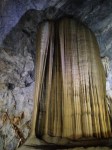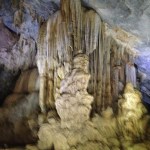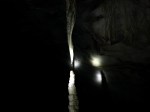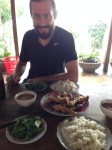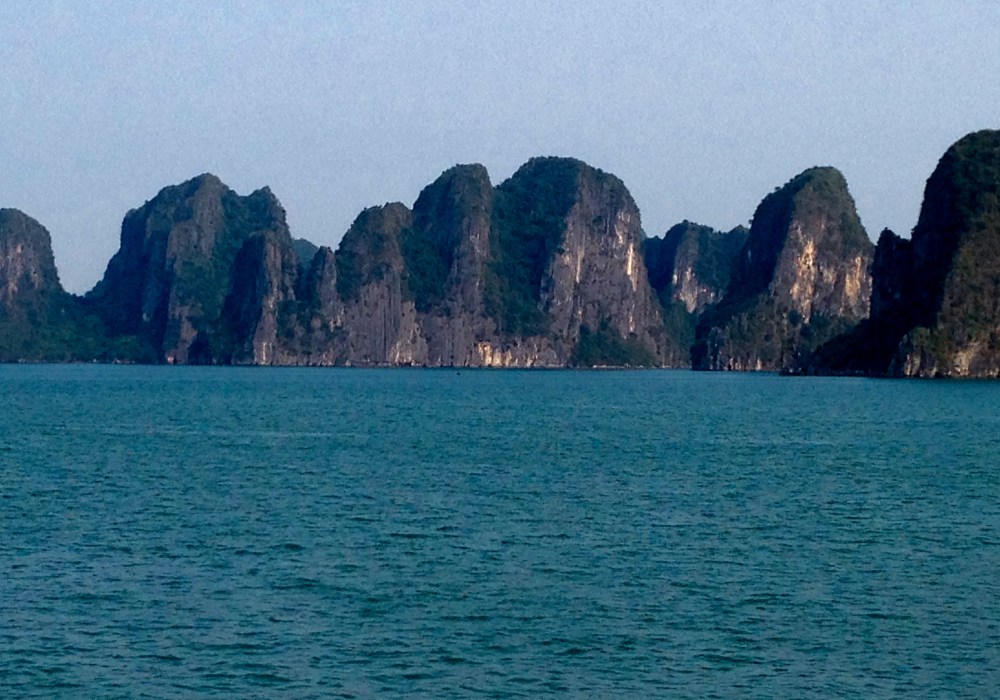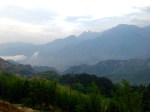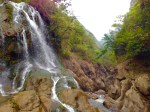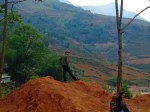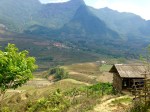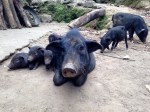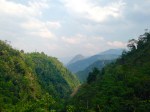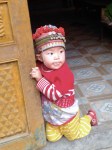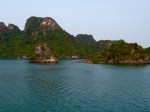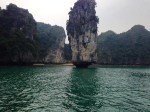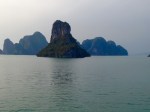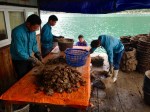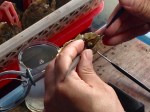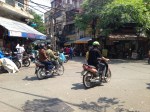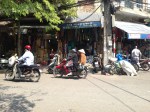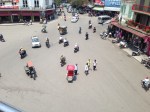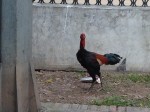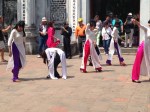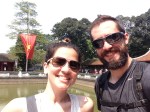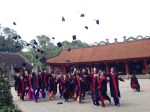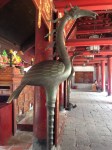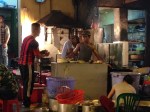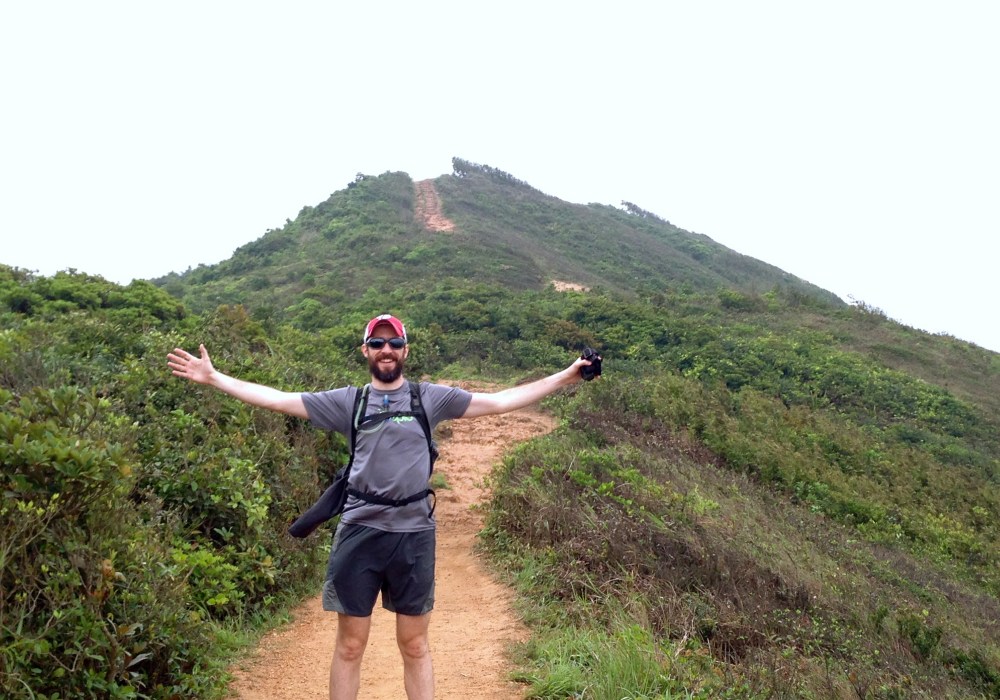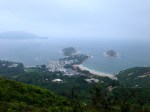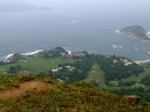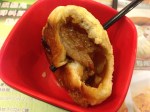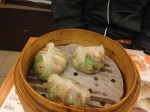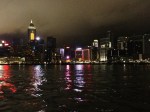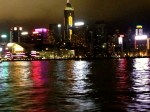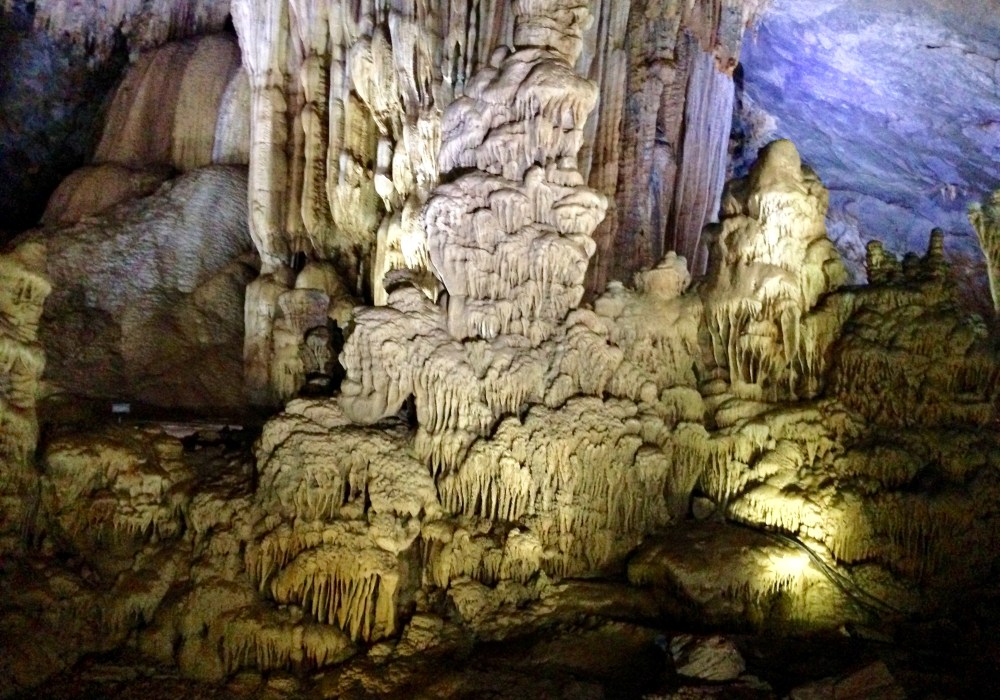
Phong Nha
Greetings from the future, Dear Readers!
One gorgeous natural phenomena deserves yet another and we are here to document as many as possible for you. (With run-on sentences.)
After a brief (45 minute) pit stop back in Hanoi, we grabbed a night bus for a roughly seven hour trip to Phong Nha-Ke Bang National park. [Note to readers: If you are traveling in northern Vietnam and are not riding a motorcycle, you’re beholden to bus routes, which all pass through Hanoi.]
Phong Nha is a new addition to Vietnam’s tourist trail owing to the fact that, six years ago, the biggest ticket in the area was hidden … underground.
In 1991, a local villager named Ho Kahn discovered the mouth of Son Doong cave, now recognized as the largest cave in the world. Mr. Ho runs a coffee shop in Phong Nha village today and is something of a local celebrity. As the entrance of the cave requires significant gear and technical experience to traverse, exploration waited until a British team could arrive in 2009. For those with a thick enough wallet, $3,000 will allow you a trip through Son Doong via Oxalis Adventures.
Our budget did not allow for this particular journey, but fortunately, the same bedrock allowing for the creation of Son Doong cave, is present throughout this part of Asia.
Karst topography: (There are apparently several people with advanced degrees in geology peeking in here from time to time, if they’d like to add anything, I’ll gladly add it here.)
We have all seen the photos of knife-edged mountains, which bring to mind the stereotypic beauty of southern Asia. Green pillars of earth and jungle towering out of a field of rice paddies with a prominence altogether different from the Rockies or Appalachians. Sometimes these mountains are so abrupt they look as if they were drawn by a child. Triangles? Really?
The shape of these mountains are indicative of limestone or “karst” topography. Maria’s earlier post on our trip to Halong Bay offers numerous, gorgeous photos of these phenomena. Surface rainfall erodes limestone at sharp angles while water makes way into the crevices of limestone, creating underground caves. Those of you who have visited the panhandle of Florida are likely familiar with the numerous sinkholes, lakes, and springs, which dot the landscape due to the limestone bedrock. Some of those aforementioned lakes (Lake Jackson, in Tallahassee, FL) have a tendency to actually “disappear” from time to time when another layer of limestone breaks open, thereby draining the lake.
A drive through Phong Nha — like many other villages from Yunnan province, China all the way to Thailand — boasts glorious vistas. Like many other small towns in Vietnam, Phong Nha is basically one street, with a handful of places a visitor can sleep for the night. A bike ride around town (video of a trip we took) is ridiculously pretty. That said, Phong Nha is set apart from other post-card-pretty towns in Southeast Asia due to one’s ability to pick and choose among a litany of outfitters for caving trips. The aforementioned Oxalis is run by some of the Brits who originally traversed Son Doong and are the gold standard.
Maria and I took a trip through the stunning Paradise Cave, a round trip trek of roughly eight kilometers, all of which was underground, lit with nothing but headlamps. There were only two other guests on our trip along with two guides, making the experience that much more exciting. While I took video of our trip, I have unfortunately come to the realization that, unlike in cartoons, you can’t actually film the eyes and teeth of your friends in pitch darkness.
Historic Significance:
Phong Nha, located in the midst of a mountainous rainforest in western Vietnam, appears lush, untouched, and certainly not a place subjected to a bombing campaign comparable to that seen in the European theater of WWII. The Ho Chi Minh trail ran through this area and America’s efforts to cut off supplies for the Viet Cong involved an aerial bombing campaign. The Viet Cong, conversely, combatted these attacks by constantly shifting the location of the HCM Trail. The end result, a huge swath of land along Vietnam’s Cambodian and Laotian border littered with craters and unexploded ordinances. As Phong Nha is a rural area, much of the rainforest swallowed the initial scarring suffered from the war. Unfortunately, the remnants of the war are more readily visible on locals with missing limbs than they are on the landscape.
A Charity Worth Giving To:
Mines Advisory Group (MAG) works to remove mines and unexploded ordinances from post-conflict areas. Every day, 12 people are killed or maimed due to explosives left behind from war and, over the past 25 years, MAG has worked in 40 countries to clear unexploded ordinances. To date, they have cleared over 5,522 square kilometers of land. We were told that under their current operating budget, it would take MAG (the only organization removing mines in the area), “10,000 years in order to reach certainty that this area of Vietnam is cleared of unexploded ordinances.”
Places to check out in Phong Nha:
Paradise Cave: We paid around $60 per person for this experience, and it was completely amazing. We spent all day wandering through a completely dark cave which ended in a huge swimming hole, lit by a skylight some 70 meters overhead. My photos and video do not bring justice to the experience, which ranks as one of my favorite Asian outings thus far.
Phong Nha Cave: (We didn’t make it here.) A quick boat ride from downtown Phong Nha, which should run you $5-10 for the whole experience. A dry cave, this can be traversed without any real worry as to your clothing. This cave was actually a hiding place for a flotilla of boats, which served as a make-shift bridge for the Ho Chi Minh trail.
Dark Cave: (We didn’t make it here either.) You’ll see a lot of photos of folks ziplining and taking mudbaths and whatnot … this is Dark Cave. There are numerous places offering a dual trip through both Dark Cave and the first kilometer of Paradise Cave. While it looked like a blast, we definitely hit budget after hiring guides for Paradise Cave.
Hang En Cave: (Didn’t make it here either … maybe next time for this one.) Two day treks are run out of numerous outfitters to this cave. While not as big as Son Doong, this trek is somewhere around $200 per person and thereby, decidedly more approachable for a traveler looking for an exciting experience.
Easy Tiger Hostel: This backpacker-friendly hotel offers dorm rooms at a reasonable rate, catering to budget-minded travelers. While we stayed across the street, we found ourselves stopping by the restaurant/ bar on a daily basis to learn about what to do and see in town. The charming and eloquent owner, Seamus, (you’re looking for the Irishman with a mohawk) is clearly working with the intent of being a responsible member of the Phong Nha community. After backpacking for several months, it is very easy to encounter “party hostel” phenomena. Instead of inviting everyone to play beer pong on the roof, Seamus offered information on local history, culture, and charities working to better the area. Seamus holds court every morning at 9 a.m., giving a run-down of all caving tours, local attractions, along with things to be concerned about. Instead of advocating that everyone rent mopeds from him (Phong Nha is mountainous, remote, and presents some dangers to the odd tourist who crashes a motorcycle) he steers people towards both minivan tours along with the less-expensive option of having a local drive a motorcycle for you. Additionally, half of Seamus’s morning speech involves alerting visitors to the problem of UXOs (unexploded ordinances) in Phong Nha. All visitors are made well aware to stay on marked roads and paths and to avoid any off-trail hiking. Additionally, Seamus does a fair amount of fund raising for MAG, who do UXO removal in the area.
The Pub With Cold Beer: This bar/restaurant/shack-in-the-country, allows visitors the chance to select a chicken and kill the chicken if they would like. While part of me morbidly thought I’d like to kill my own lunch, I was actually glad I didn’t do this myself as the woman running the operation (affectionately called “the chicken lady” by everyone in Phong Nha) was able to dispatch our chicken in a manner that involved much less struggle than I would have imagined. The route to this bar is pretty wild and is detailed in the upcoming video. If you are on a motorbike, I would highly advise consulting Seamus about the best (see: most paved) route as we seem to have taken the one where all the roads were made of chocolate milk and Playdough.
Check out our photos from Phong Nha:


